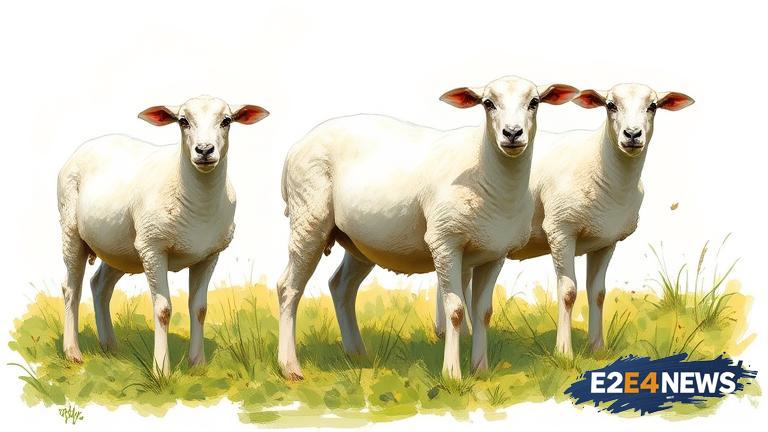Sheep farming is a significant sector in the agricultural industry, and optimizing breeding practices is crucial for improving productivity and profitability. One approach that has gained popularity in recent years is the use of breeding values to select for desirable traits such as lamb weights and ewe fertility. Breeding values are estimated genetic values that predict an animal’s potential to pass on certain characteristics to its offspring. By selecting breeding stock with high breeding values for lamb weights and ewe fertility, farmers can improve the overall performance of their flock. This approach has been shown to increase lamb weights, improve ewe fertility, and reduce the need for expensive feed supplements. Furthermore, breeding values can be used to identify genetic defects and diseases, allowing farmers to make informed decisions about which animals to breed and which to cull. The use of breeding values also enables farmers to select for other desirable traits such as growth rate, muscle depth, and fat depth. In addition, breeding values can be used to improve the overall health and welfare of the flock by selecting for traits such as resistance to disease and parasites. To implement this approach, farmers need to work with a reputable breeding program that provides accurate and reliable breeding values. This typically involves collecting data on the performance of individual animals, including their birth weights, weaning weights, and fertility rates. The data is then used to estimate the breeding values of each animal, which can be used to make informed decisions about which animals to breed and which to cull. Farmers can also use breeding values to identify top-performing animals and use them as sires or dams to improve the overall quality of the flock. Moreover, breeding values can be used to develop customized breeding programs that meet the specific needs and goals of each farm. For example, a farm that specializes in producing high-quality lamb for the export market may prioritize breeding values for lamb weights and growth rate, while a farm that focuses on producing breeding stock may prioritize breeding values for ewe fertility and maternal traits. The benefits of using breeding values in sheep farming are numerous, and include improved productivity, increased profitability, and enhanced animal welfare. By selecting for desirable traits and identifying genetic defects and diseases, farmers can reduce the need for expensive feed supplements and veterinary treatments. Additionally, breeding values can be used to improve the overall efficiency of the farm by reducing the number of animals that need to be bred and raised. Overall, the use of breeding values is a powerful tool for improving the productivity and profitability of sheep farming operations. By working with a reputable breeding program and using accurate and reliable breeding values, farmers can make informed decisions about which animals to breed and which to cull, and develop customized breeding programs that meet their specific needs and goals. With the increasing demand for high-quality lamb and breeding stock, the use of breeding values is likely to become even more important in the future. As the sheep farming industry continues to evolve, it is likely that new technologies and approaches will be developed to support the use of breeding values, such as genetic testing and artificial intelligence. However, for now, the use of breeding values remains a key component of any successful sheep farming operation. In conclusion, the benefits of using breeding values in sheep farming are clear, and this approach is likely to play an increasingly important role in the industry in the years to come. By selecting for desirable traits and identifying genetic defects and diseases, farmers can improve the overall performance of their flock, reduce costs, and enhance animal welfare. Whether you are a seasoned sheep farmer or just starting out, understanding the benefits of breeding values and how to implement this approach on your farm is essential for achieving success in this competitive industry.
